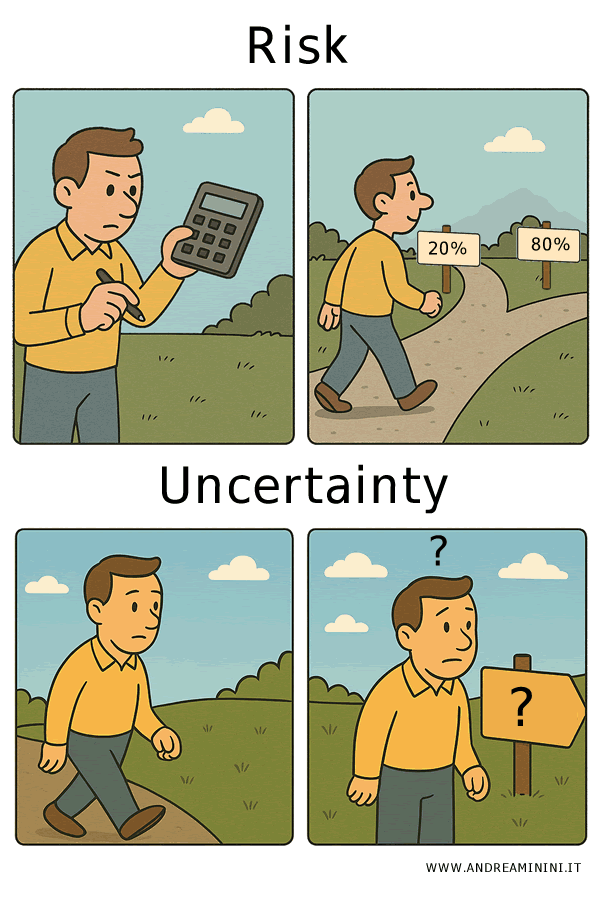Risk vs. Uncertainty: Why the Difference Matters in Economics
In a world full of unknowns, knowing the difference between risk and uncertainty is more than just academic - it's central to understanding how decisions are made in business and economics. While the two concepts are often lumped together, they refer to very different situations. This key distinction was first outlined by economist Frank Knight back in the 1920s - and it still shapes how we think about the future today.
- Risk
Risk describes situations where we can assign a clear probability to a future outcome. It’s measurable - and often manageable.Real-world example: A company trading internationally can calculate the risk of currency fluctuations using data and models. Since it knows the range of possible outcomes and their likelihood, it can hedge against that risk with financial tools.
- Uncertainty
Uncertainty, on the other hand, kicks in when there’s no way to know what might happen - or how likely it is. The data may be missing or simply not exist.Real-world example: A startup launching a groundbreaking product in an entirely new market faces true uncertainty. There's no history, no benchmarks, no model to guide predictions. It's like throwing a dart blindfolded - without even knowing where the dartboard is.
Frank Knight’s Big Idea
Frank Knight’s 1921 classic Risk, Uncertainty and Profit was the first work to formally separate risk from uncertainty. His insight was simple but powerful: when outcomes can be measured with objective probabilities, we’re dealing with risk. When they can’t, it’s uncertainty.
He coined the term Knightian risk to describe measurable situations - ones where insurance is possible. Knightian uncertainty, by contrast, involves outcomes so unpredictable that no amount of data can help. No insurer in their right mind would underwrite that kind of exposure - unless they’re unusually optimistic or dangerously distracted.

Knight argued that only risk can be neatly integrated into traditional economic models. Uncertainty is messier. It’s where entrepreneurs operate, where innovation happens, and where decision-making relies more on judgment than formulas.
Example: An insurance company can offer policies for fire or theft because the odds are well known. But it can’t insure a company’s success in launching a never-before-seen product - that’s uncertainty, not risk.
Modern Perspectives: Subjective Decision-Making
Starting in the mid-20th century, new theories emerged that challenged Knight’s sharp divide. Economists began to accept that people often act on gut feeling, experience, or belief - assigning subjective probabilities even when there’s no solid data to back them up.
This shift gave rise to models where decision-making under uncertainty is still analyzable. The boundary between risk and uncertainty, while still useful, became less rigid.
Example: An investor might back a startup based on instinct or personal conviction, not hard probabilities. One investor might see it as too risky, while another sees the potential and takes the leap.
In fact, modern behavioral economics shows that people are surprisingly adept at making decisions in the absence of hard numbers. The line between risk and uncertainty has blurred in practice - even if it still matters in theory.
And let’s face it: if economists really could predict the future, they’d probably be working on Wall Street, not writing research papers.
